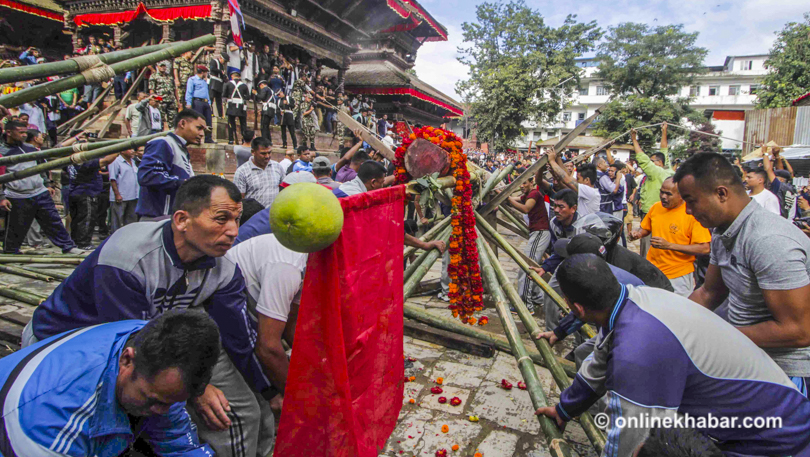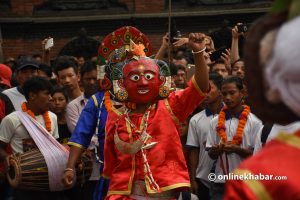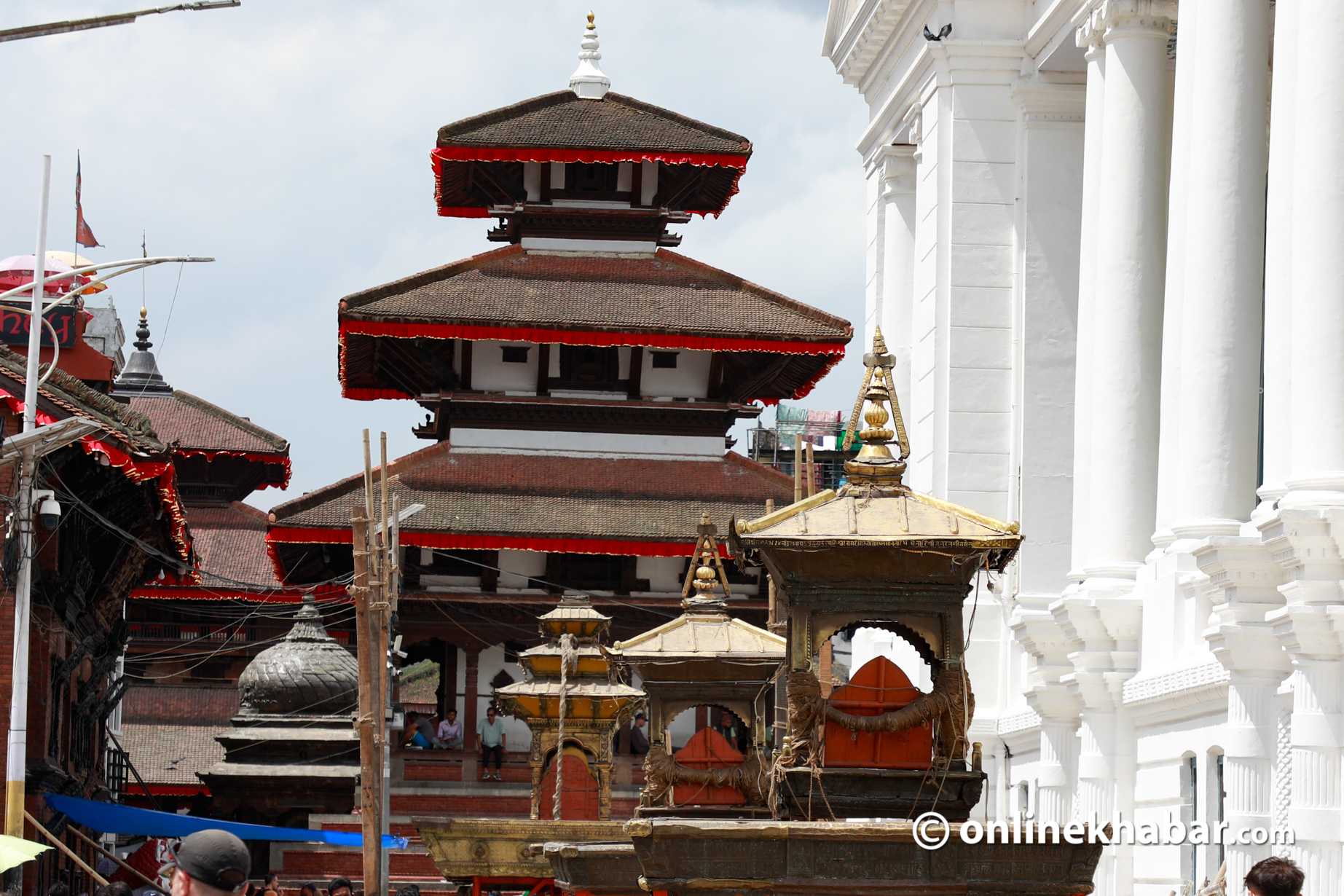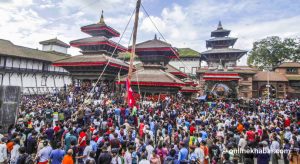
The vibrant Indra Jatra is already in full swing. Today, the third day of the festival, begins the chariot procession of Kumari, Ganesh and Bhairav. In between, the festival is full of masked dances, cultural processions and musical processions, and feasts.
Today, many people use Indra Jatra and Kumari Jatra as almost synonymous with each other. But, do you know that they are two different festivals and they have their own importance as well as different backstories?
Here, we explain.
The 7-century-old festival of Indra Jatra
Apart from Dashain, Indra Jatra is the second longest festival observed in Nepal and the longest festival observed by the Newa community, the native inhabitants of Kathmandu, in particular. The festival lasts eight days that starts with the erecting of the lingo (a ceremonial pole) and ends with pulling that down on the eighth day.

It is not certain exactly when the Indra started being observed. But, it is certain that the tradition of Indra Jatra started in Nepal somewhere in the late ancient times. The mention of Indra Jatra and Indra Dhwajotthan can be seen as early as the 14th century in the Gopal Raj Banshavali.
It is also mentioned in the inscription from 1439 (Nepal Sambat 561) located in Bhaktapur. But, the stories suggest that Indra Jatra is even older than that.
Indra Jatra is about Lord Indra’s quest for special flowers required for his mother’s rituals. But, the disguised lord was misjudged by the locals and was taken hostage for punishment. Then the waiting mother, Dagini, came in search of Indra, along with Airawat, Indra’s vahan (or vehicle). The enactment of the story and procession is called Indra Jatra.
The later addition of Kumari Jatra
But, Kumari Jatra’s stories start with the story of Goddess Taleju. The goddess was pretty close with the kings, but when she was angered she stopped visiting. But, to redeem that, the goddess directed the king to search for a girl from the Shakya clan in Kathmandu and establish her as the living embodiment of Goddess Taleju.
Convinced that worshipping the goddess Kumari with devotion will bring welfare to the state and the people, King Jaya Prakash Malla built a residence for the Kumari in Kathmandu and settled the Kumari. In addition, he also started the tradition of the Kumari chariot procession on the day of Indra Jatra in 1756.
There seems to be a special reason for starting Kumari Jatra on the day of Indra Jatra: there is a tradition to believe that Indra is the king of the gods whereas the king is also considered as Indra.

Along with Kumari Jatra, Kumari’s chariot is followed by chariots with the living embodiments of Lord Ganesha and Lord Bhairav.
The uniqueness of Kumari Jatra
Kumari is a young virgin girl selected from the Shakya community of Kathmandu. As per the words of the Goddess Taleju, the girl who has 32 traits and carries strong astrological arrangements, has no bruises or wounds is selected to be the next embodiment of the goddess.
The girls are chosen when they are first two to five years of age and stay as the living goddess until the year she menstruates. Kumari is the only living goddess worshipped and revered by the devotees in the world.
There are many chariot processions held in the Kathmandu valley. But, Kumari Jatra is the only procession that starts and ends from one point: Basantapur Durbar Square.
The chariot processions are held for three days.
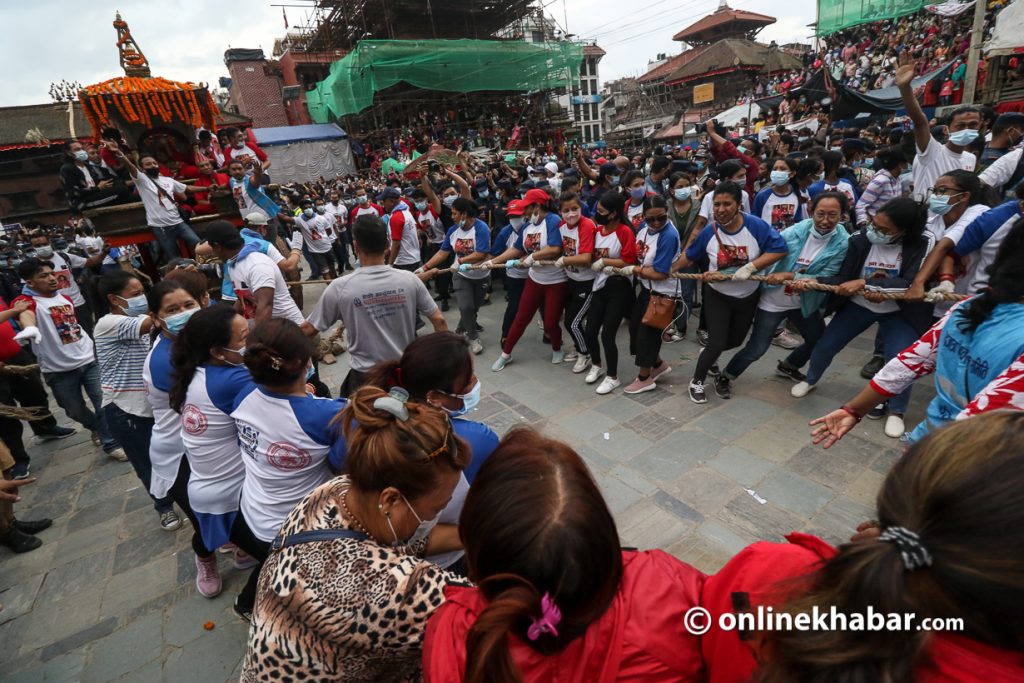
Route on the first day or Kwaneyā (downtown procession) begins from Basantapur and follows through Maru-Chikanmugal-Jaisidewal-Lagan-Brahma Marga-Wonde-Hyumat-Kohity-Bhimsensthan-Maru-Basantapur.
Route on the second day or Thaneyā (uptown procession) the procession begins from Basantapur and proceeds to Pyaphal-Yetkha-Nardevi-Tengal-Nhyokha-Nhyakan Tole-Asan-Kel Tole-Indra Chok-Makhan and back to Basantapur.
Route on the third day or Nanichaya (midtown procession) starts from Basantapur and then to Pyaphal-Yetkha-Nardevi-Kilagal-Bhedasing-Indra Chok-Makhan and back to Basantapur.
During the third day of Kumari Jatra, women pull the chariots along the city. But it was not always that way. Since 2012, the chariot of Kumari is pulled by all-women devotees.







